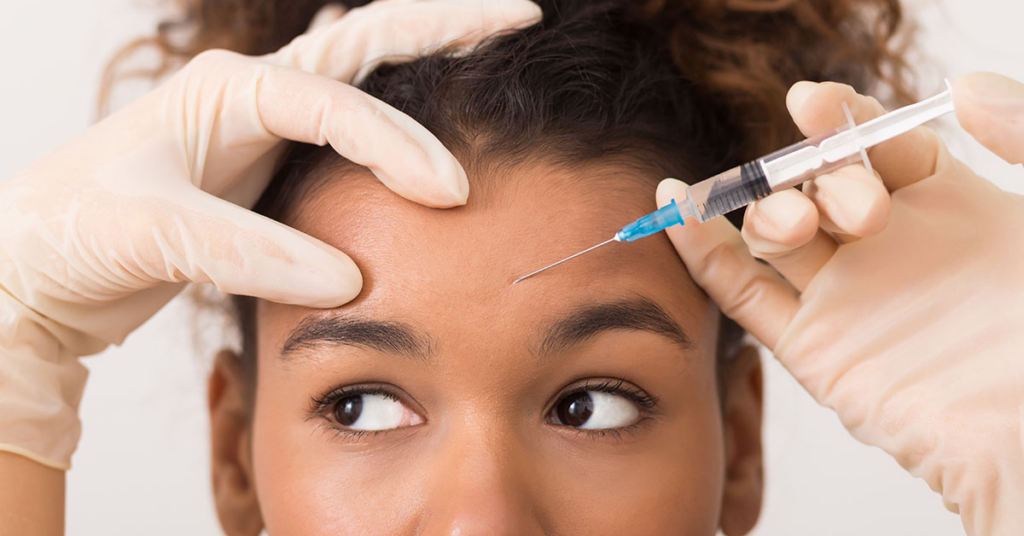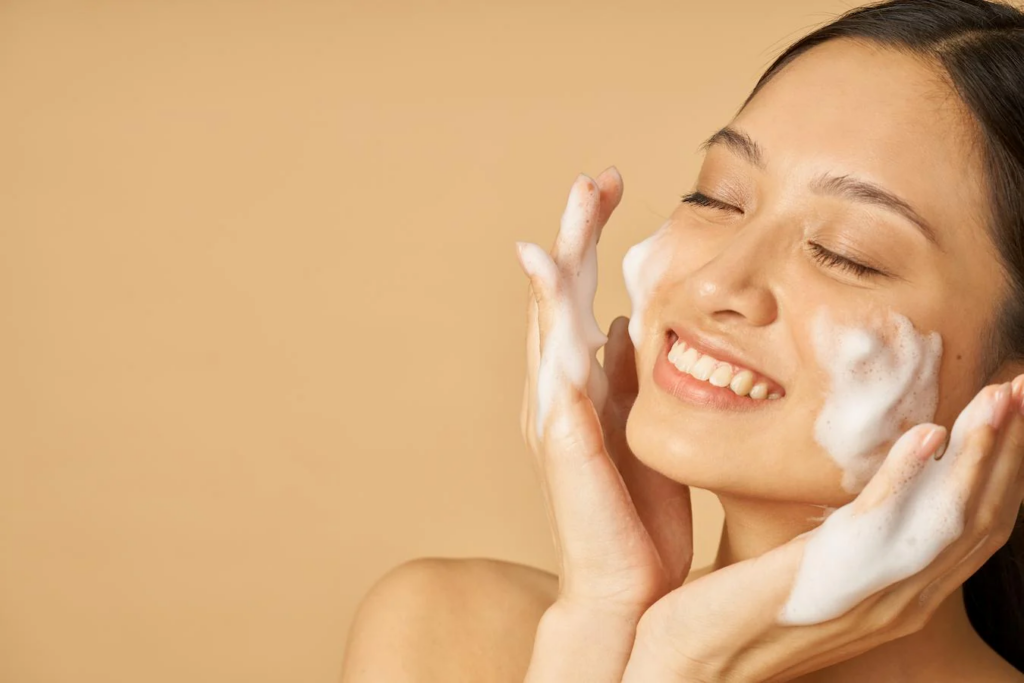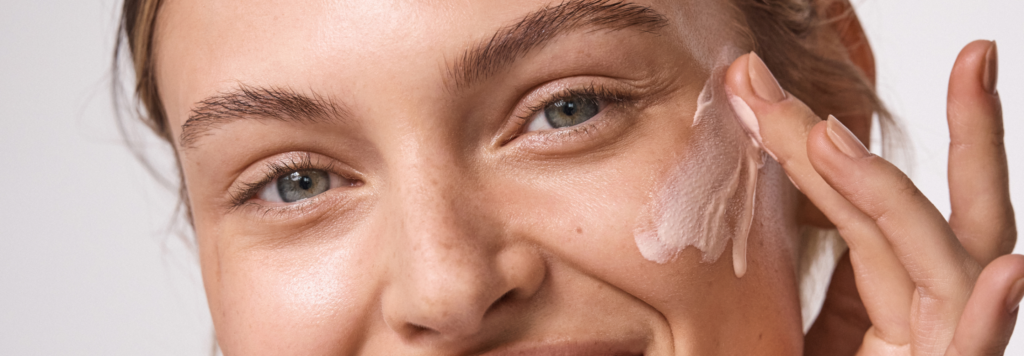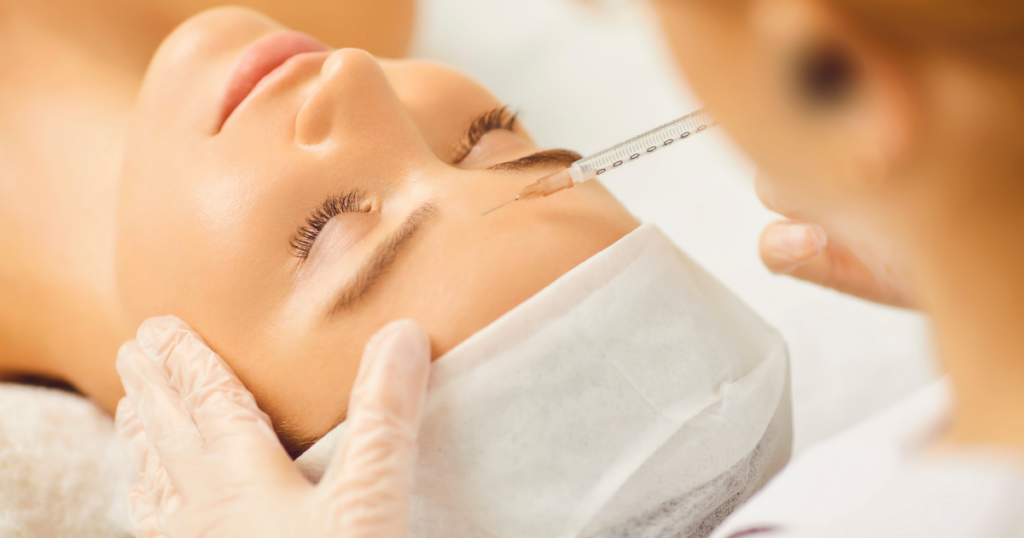Can you wear makeup after Botox? “Beauty is pain”—a common phrase we’ve all heard at least once in our lives. And in this 84 billion-dollar beauty industry, the phrase is taken more literally than figuratively.
Botox, as many of us might be aware, involves injections using a toxin to temporarily freeze muscles, primarily to smooth wrinkles on the face.
However, Botox isn’t solely about aesthetics; it serves a range of medical purposes, from addressing neck spasms to preventing migraines. Yet, amid the buzz around Botox, concerns naturally arise.
One burning question that frequently surfaces: Is Botox safe and can you wear makeup immediately after Botox injections?
Let’s dive into this common query and uncover what’s advisable in the world of post-Botox cosmetics.
What is Botox and How do they work?

Botulinum toxin, produced by a particular strain of bacteria, can indeed be toxic in larger quantities. However, it’s the application of carefully measured, diluted doses of this toxin that helps diminish facial wrinkles effectively.
Botulinum toxin is a medication that is also used to manage and treat therapeutic and cosmetic purposes.
Medicinal uses include chronic migraine, spastic disorders, cervical dystonia, and detrusor hyperactivity.
Botulinum toxin is in the neurotoxin class of medications. When injected, this toxin disrupts specific nerve signals responsible for muscle contractions, leading to a temporary relaxation of the muscles and a reduction in wrinkles.
This smoothing effect typically lasts for around 3 to 6 months before the muscles regain their mobility and wrinkles gradually reappear.
Is Botox Safe a safe procedure?
Botulinum toxin, also known as Botox, is responsible for causing botulism, a serious and potentially deadly illness in humans.
It’s a highly potent poison, and even small amounts can lead to severe sickness. The Centers for Disease Control and Prevention (CDC) views botulism as a major threat in bioterrorism.
However, in cosmetic procedures, the doses of Botox used are much smaller than those needed to cause illness. This makes it extremely rare for people to develop botulism symptoms after receiving Botox injections.
Although rare, botulism can occur if someone receives too much Botox or uses unapproved products containing higher doses of the toxin. It’s important to only receive Botox from licensed sources to avoid such risks.
Can you wear makeup after Botox?
Yes, you can wear makeup and stick to your usual skincare routine after having Botox, but not right away.
When you get Botox injections, they’re done with a small needle, making tiny punctures where the Botox goes in. While these punctures are usually hard to see, they might make it tricky to put on makeup right after.
It’s best to wait about four hours before applying makeup after a cosmetic procedure. If you really need to wear makeup sooner, give your skin at least 30 minutes to heal from the injections. Even though you might want to cover up any redness with makeup, it’s better to let your skin rest.
And remember, try not to rub or massage the injected area. Doing so could spread the Botox to other muscles, leading to unintended effects.
Generally, it’s a good idea to avoid any beauty treatments for at least a day after having Botox. This includes things like facials, waxing, and even intense exercise. These activities can irritate your skin, making the injection site look red and swollen.
The DO’S AND DON’TS after getting a Botox
DON’T:
- Say ‘No’ to Gym

Take a break from exercising for a day or two. It’s best to steer clear of any physical activity, especially intense workouts, for 24 hours after your treatment.
Exercising too soon can make the treatment spread to muscles it wasn’t supposed to, which might lead to an unwanted frozen face.
- No Spa for a while

A relaxing spa day might not be the best way to recover, either. Avoid getting massages, as they can make the Botox spread.
It’s best to wait a few hours before getting a facial after an injection.
Also, treatments like dermabrasion, microdermabrasion, radiofrequency, or lasers could spread the filler, so it’s better to steer clear of those for a while too.
- Avoid Alcohol

Drinking alcohol thins your blood and makes your blood vessels wider, which can make bruising more likely around where you get the injections.
Not drinking alcohol before your appointment can lower the risk of bruising, swelling, and feeling dizzy afterward.
DO’S:
- Use a good, gentle cleanser

After getting Botox, it’s best to keep your skincare routine simple. Begin by washing your face with a gentle and soothing cleanser.
Opt for a mild Hydrating Gentle Cleanser that won’t irritate your skin further after the injection.
- Follow with Serum

A quality serum can boost the anti-aging benefits of Botox on your skin.
Typically, hyaluronic acid is described as a great addition to any anti-aging routine because it helps the skin hold onto moisture, making it look fuller and more hydrated.
This can help minimize the fine lines that Botox targets.
- Never forget your sunscreen

And, as usual, sunscreen is a must. Botox treatments won’t be effective if you don’t shield your skin from the sun’s harmful rays.
Choose from the top sunscreens for your face to ensure you’re properly protected from UV damage.


